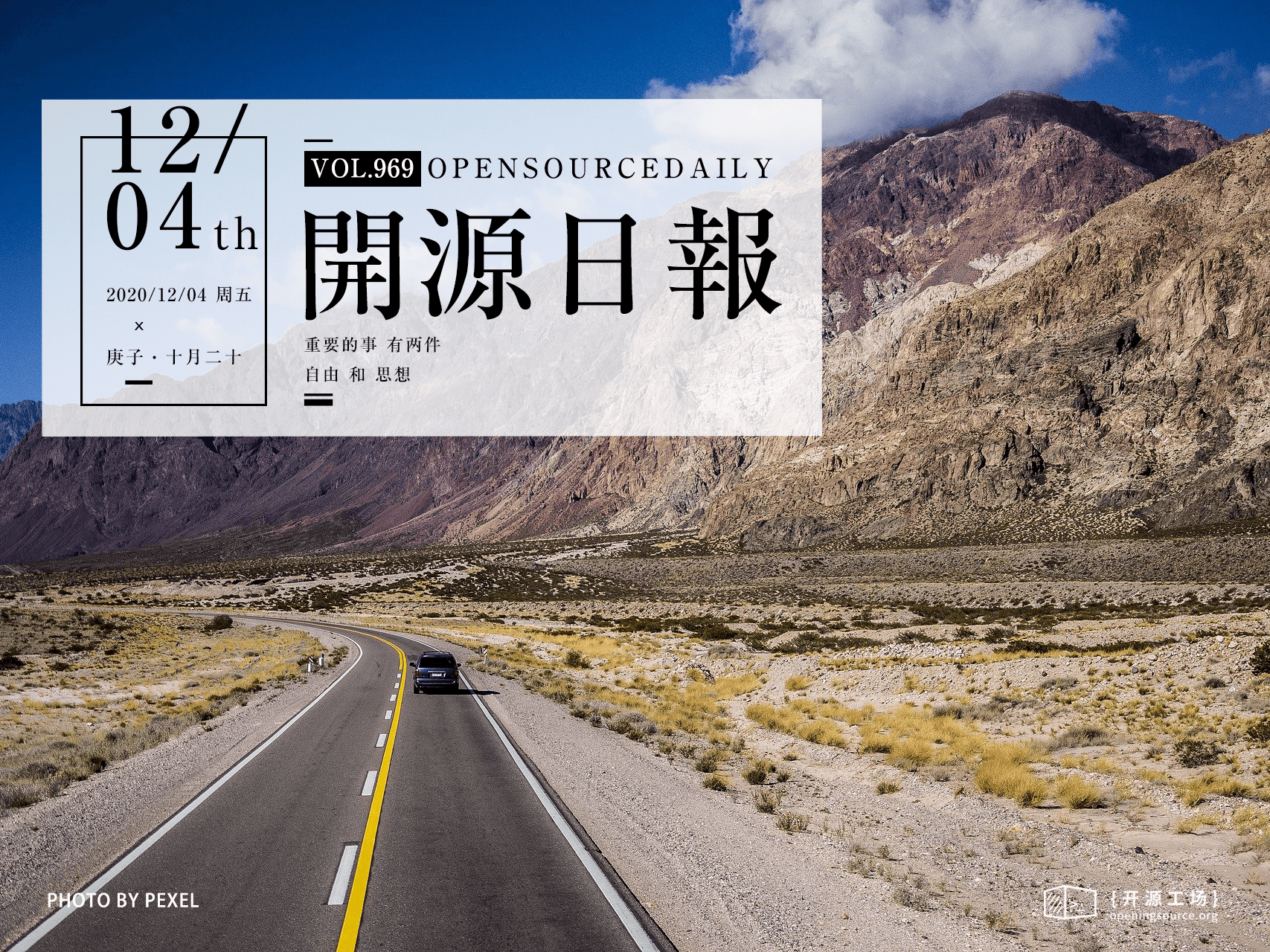今日推薦開源項目:《插件 Enhanced GitHub》
今日推薦英文原文:《Speaking Machine and Human in the Second Machine Age》

今日推薦開源項目:《插件 Enhanced GitHub》傳送門:項目鏈接
推薦理由:該項目是一個作用在 GitHub 網頁上的插件,能夠顯示單個文件/庫的大小,一鍵複製文件內容,以及下載單個文件。
今日推薦英文原文:《Speaking Machine and Human in the Second Machine Age》作者:John Maeda
原文鏈接:https://johnmaeda.medium.com/speaking-machine-and-human-in-the-second-machine-age-40fd589886b
推薦理由:隨著科技發展,每次工業革命的重心都越來越抽象了,從運轉的齒輪到看不見的電磁波,再到雲。
Speaking Machine and Human in the Second Machine Age
When I was first starting to formally study design in the late 80s, I came across a book at the MIT Press bookstore with the weighty title, 「Theory and Design in the First Machine Age,」 written by the architectural critic Reyner Banham.It had a handwritten yellow discount sticker atop an austerely designed black cover with big white type and orange-red horizontal lines. Its original publication date of 1960 partially explained why the book cover looked out of fashion and yet it still stood out in a way that spoke to me. The price definitely worked for me too.
My first read didn』t get me anywhere because the book was written in design-ese. At the time I spoke fluent engineer-ese, which made it easier for me to read equations, principles, and anything involving computation. But the book stayed with me throughout the years, and eventually by the fourth read I found myself chuckling at Banham』s droll yet witty prose. I guess that was proof that by then I』d become fluent in design-ese too. And yet the title』s reference to 「the first machine age」 signaled to me that the ability to speak engineer-ese was still highly relevant.
Machines don』t need to take breaks, you can pour fuel into them while they』re running, and they can operate continuously.
The kind of machines that Banham refers to are mechanical, steam-powered ones that disrupted how civilization works. The steam engine of the 1700s was the technological catalyst for 「the first industrial revolution」 because it radically altered what a business could accomplish. Before the steam-powered locomotive, the only alternative to long-distance transportation was horses. Horses need to take regular rests, eat, and sleep. Machines don』t need to take breaks, you can pour fuel into them while they』re running, and they can operate continuously.
And then electricity came onto the scene as a viable technology during the late 1800s. All of the sudden, there was no need for a bulky steam engine to sit on-site and take up space. Instead, the electricity could be transmitted at a distance to power on-site electric motors, with the added perk of bringing the high-tech invention of incandescent light. This changeover from steam to electrical power marks 「the second industrial revolution」, during a period when British manufacturers were dominant and had mastered using steam power. The resulting complacency and resistance to change — just as manufacturing in the U.S. was kicking off — resulted in the British getting disrupted by the upstart Americans who used electricity to power their factories. You can read a lot of this subtext in Banham』s book. Design』s centrality switched from being European-centric to US-centric, primarily due to this technology shift.
Banham』s book ends when it』s just starting to get even more interesting. Because the 「third industrial revolution」 of the personal computer took off only a decade after Banham』s declaration of the first machine age. My favorite way to describe this big shift is the famous Steve Jobs quote to describe the personal computer as 「a bicycle for the mind.」 In other words, computing machines had transcended just supercharging physical power and instead had enabled humanity to refigure their cognition powers with a new level of efficiency. And just a few decades later, the so-called 「fourth industrial revolution」 began to emerge with billions of people all connected through computing machinery running at an ethereal scale we commonly refer to as 「the cloud.」
The cloud projects no tangible trace of its existence, but it responds to those who speak machine during this second machine age.
In 1999, David Bowie accurately called out this fourth industrial revolution as our being 「on the cusp of something exhilarating and terrifying.」 Each industrial revolution has moved the center of gravity into dimensions that are increasingly intangible and difficult to comprehend. During Banham』s era, it was possible to see the mechanical results of technology with one』s eyes and touched it with one』s hands. A steam engine hissed. An electric generator quietly hummed. A personal computer silently blinks its LED. The cloud projects no tangible trace of its existence, but it responds to those who speak machine during this second machine age. Knowing the language of the first machine age won』t get you far these days. It』s a beautiful history to know, but be prepared to receive a yellow discount sticker if you don』t keep up.
I』ll be posting weekly as part of the Medium team』s special invitation for me to share what I』ve learned over the years about how to speak both machine and human. If the topic of How To Speak Machine interests you, there』s a book for that. Thank you for tuning in! — JM
下載開源日報APP:https://openingsource.org/2579/
加入我們:https://openingsource.org/about/join/
關注我們:https://openingsource.org/about/love/
